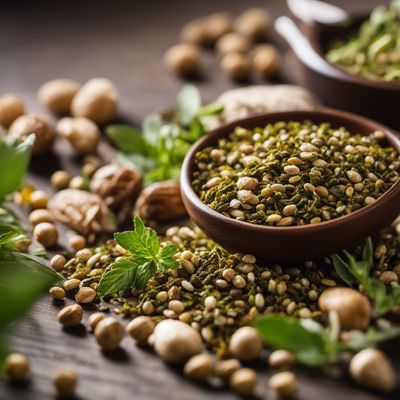
Ingredient
Salep
The Orchid's Secret: Unveiling the Delights of Salep
Salep is a flour-like substance obtained from the tubers of specific orchid species, primarily Orchis mascula and Orchis militaris. It has been enjoyed for centuries in Middle Eastern and Mediterranean cuisines. Salep has a distinctive creamy texture and a delicate floral flavor that adds a touch of elegance to desserts and beverages.
Origins and history
Salep has a long history that can be traced back to ancient civilizations. It was highly valued in the Ottoman Empire, where it was used to make a popular hot beverage called sahlab. Salep was also used in traditional medicine for its potential health benefits, such as soothing digestive issues and providing a source of energy.
Nutritional information
Salep is a good source of carbohydrates and provides a moderate amount of protein. It also contains essential minerals like calcium and iron. However, it is important to note that the nutritional content may vary depending on the specific brand and preparation method.
Allergens
Salep is derived from orchid tubers and does not contain common allergens like gluten, nuts, or dairy. However, individuals with orchid allergies should avoid consuming or using salep.
How to select
When purchasing salep, look for high-quality products from reputable brands. Opt for finely ground salep powder that is free from any lumps or impurities. Additionally, consider purchasing from brands that prioritize sustainable and ethical sourcing practices.
Storage recommendations
To maintain the freshness and quality of salep, store it in an airtight container in a cool, dry place away from direct sunlight. Proper storage will help preserve its flavor and prevent moisture absorption.
How to produce
Salep production requires specialized knowledge and equipment. It involves harvesting the tubers of specific orchid species, drying and grinding them into a fine powder. Due to concerns about sustainability and the protection of orchid species, the commercial salep industry has faced restrictions in recent years. As a result, it is recommended to purchase salep from trusted sources that adhere to ethical and sustainable practices.
Preparation tips
To prepare salep, mix a tablespoon of salep powder with a small amount of cold milk or water to form a smooth paste. In a saucepan, heat milk or water until hot but not boiling. Gradually whisk in the salep paste, stirring continuously until the mixture thickens. Sweeten with sugar or honey according to taste. Serve hot and garnish with a sprinkle of ground cinnamon or grated chocolate, if desired.
Culinary uses
Salep is commonly used in Middle Eastern and Mediterranean cuisines to create a variety of desserts and beverages. It is a key ingredient in traditional Turkish sahlab, a hot milk-based drink flavored with salep and garnished with cinnamon or nuts. Salep is also used to make ice cream, puddings, and other creamy desserts.
Availability
Salep is primarily cultivated and consumed in countries like Turkey, Greece, and Iran. It is commonly available in local markets, specialty food stores, and online retailers that offer Middle Eastern or Mediterranean ingredients.

